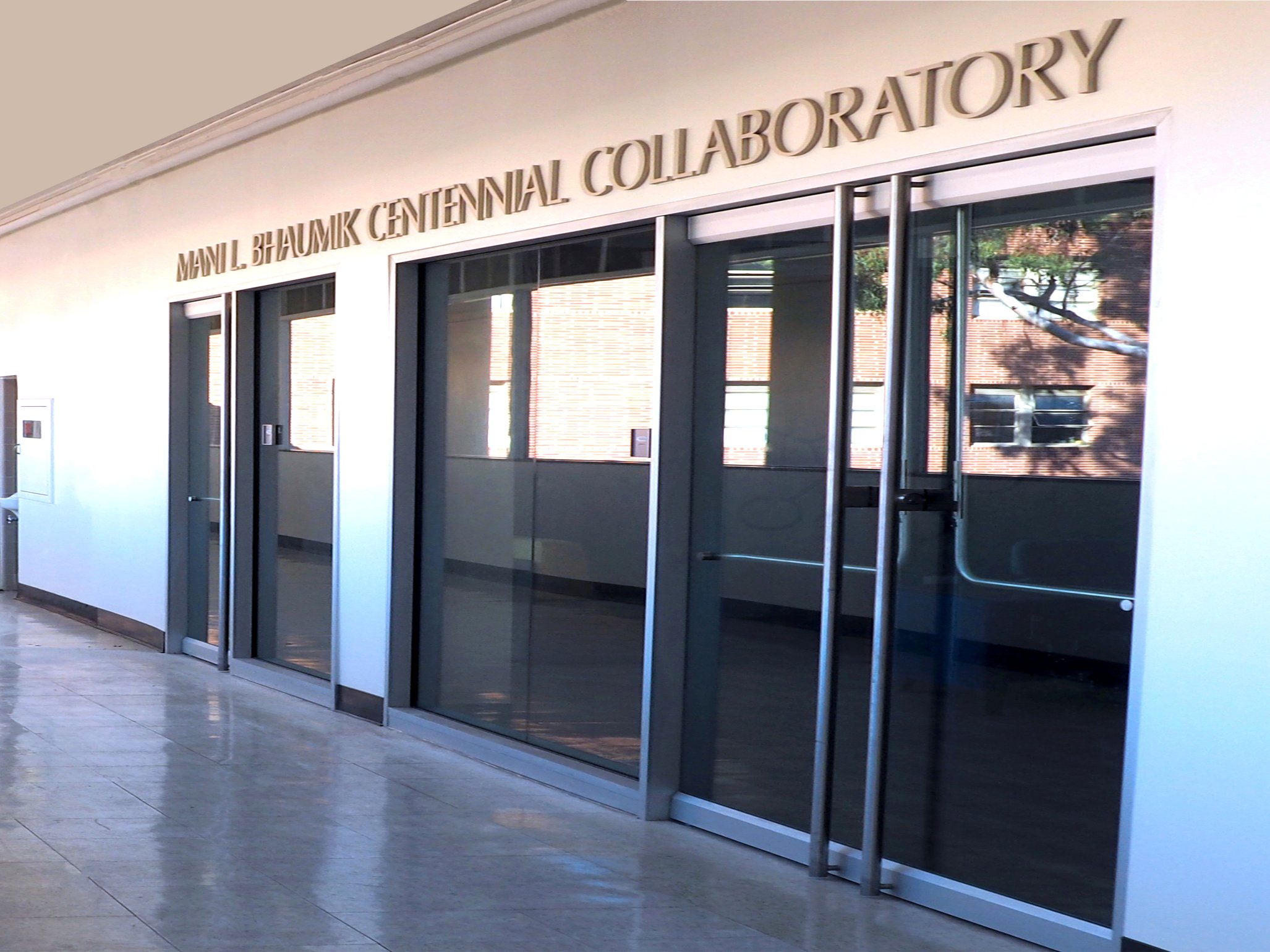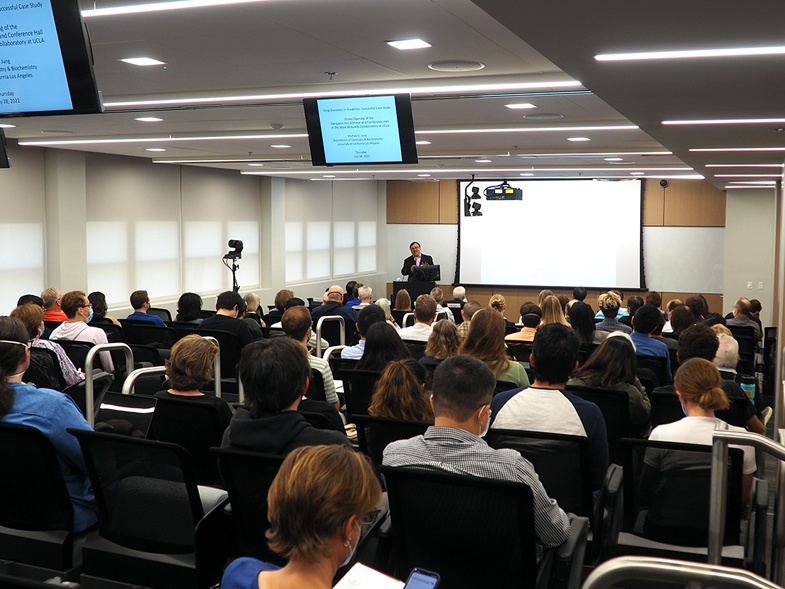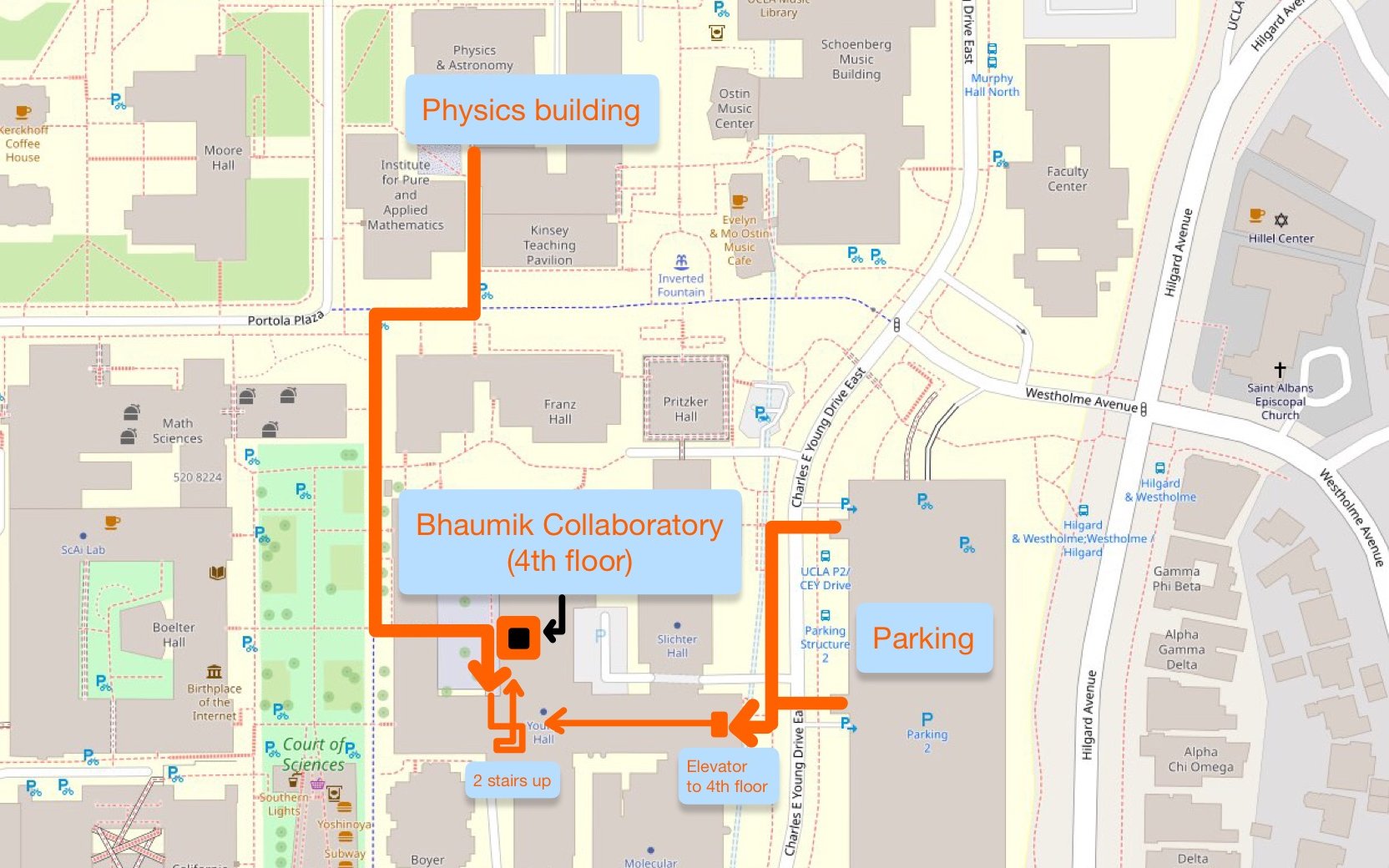2023 Southern California Strings
Friday, March 24, 2023
Hosted by the Mani L. Bhaumik Institute for Theoretical Physics, UCLA Department of Physics and Astronomy
A zoom link is available upon request. Contact Ruben Monten.
Schedule
| 8:30 am | - | 9:00 am | coffee and refreshments |
| 9:00 am | - | 10:30 am |
Tensor Models, Group Singlets, and Many-Body ScarsQuantum many-body scars have been an active area of research for several years. In some many-body systems, the Hilbert space breaks up into a large ergodic sector and a much smaller scar subspace. It has been suggested [K. Pakrouski et al., Phys. Rev. Lett. 125 (2020) 230602] that the two sectors may be distinguished by their transformation properties under a large group whose rank grows with the system size (this group is not a symmetry of the Hamiltonian). The scars are invariant under this group, while all other states are not. We begin by reviewing some many-body systems where group singlet states have special properties: the matrix quantum mechanics and fermionic tensor models. We continue on to appropriately deformed versions of the Hubbard model and show that the scar subsector is invariant under a large group, which acts on the lattice sites. More generally, we apply this idea to lattice systems with N sites that contain M Majorana fermions per site. The Hilbert space may be decomposed under the action of the SO(N)xSO(M) group, and the scars are the SO(N) singlets. For any even M, there are two families of scars. One of them, which we call the eta-states, is symmetric under the group O(N) that includes a reflection. The other, the zeta-states, has the SO(N) invariance only. For M=4, where our construction reduces to a deformed SU(2) Hubbard chain with local interactions, the former family are the N+1 eta-pairing states, while the latter are the N+1 states of maximum spin. For M=6, we exhibit explicit formulae for the scar states and calculate the bipartite entanglement entropy analytically. For large N, it grows logarithmically with the region size. In general, the energies of the scars within each family are not equidistant. For M>6 we also find that, with local Hamiltonians, the scars typically have certain degeneracies. The latter part of the talk is based on the paper “Majorana Scars as Group Singlets” by Zimo Sun, Fedor Popov, Igor Klebanov and Kiryl Pakrouski, arXiv:2212.11914. |
| 10:30 am | - | 11:00 am | coffee |
| 11:00 am | - | 12:30 pm |
CFT Data at Large Scaling Dimension |
| 12:30 pm | - | 2:00 pm | lunch |
| 2:00 pm | - | 3:30 pm |
The large charge sector of CFTsSectors with large internal charge in CFTs can be generally studied semiclassically, in an expansion in inverse powers of the charge. In this talk, I will review the basic ideas underlying this construction and present some novel results, focusing on the O(2) model in 2+1 dimensions. The key ingredient is the superfluid effective theory, which allows computing correlation functions in terms of the hydrodynamic Goldstone modes. |
| 3:30 pm | - | 4:00 pm | coffee |
| 4:00 pm | - | 5:30 pm |
The central dogma and entanglement in de Sitter spaceThe central dogma of black hole physics – which says that from the outside a black hole can be described in terms of a quantum system with exp(Area/4G) states evolving unitarily – has recently been supported by computations indicating that the interior of the black hole is encoded in the Hawking radiation of the exterior. In this talk, we probe whether such a dogma for cosmological horizons has any support from similar computations.The fact that the de Sitter bifurcation surface is a minimax surface (instead of a maximin surface in the case of black holes) causes problems with this interpretation when trying to import calculations analogous to the AdS case. This suggests placing the holographic dual on the de Sitter horizon itself, where we formulate a two-sided extremization prescription for computing entanglement entropy in the holographic dual. We find answers consistent with general expectations for a quantum theory of de Sitter space, including a vanishing total entropy and an entropy of A/4G when restricting to a single static patch. We will also explore some other approaches to probing a microscopic foundation for the Gibbons-Hawking entropy.
|
| 5:30 pm | - | 7:00 pm | dinner @ PAB patio |
After the talks there will be dinner on the patio outside of the third floor of the Physics & Astronomy building. As temperatures in Southern California have not quite picked up yet, a jacket might be advised.
At this time, the Schwinger Lounge on the fourth floor of the Physics & Astronomy building will also be accessible for impromptu discussions.
Location
Mani L. Bhaumik Centennial Collaboratory
607 Charles E. Young Dr., East, Los Angeles


Map to the lecture hall:

SoCal Grad Strings & Fields
Grad students are also invited to join SoCal Grad Strings & Fields on Saturday 3/25. You can RSVP and find more info here.
Contact
For more information please contact Ruben Monten, Per Kraus or Thomas Dumitrescu.
